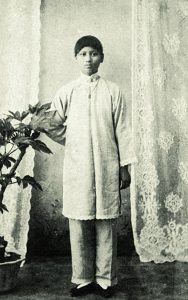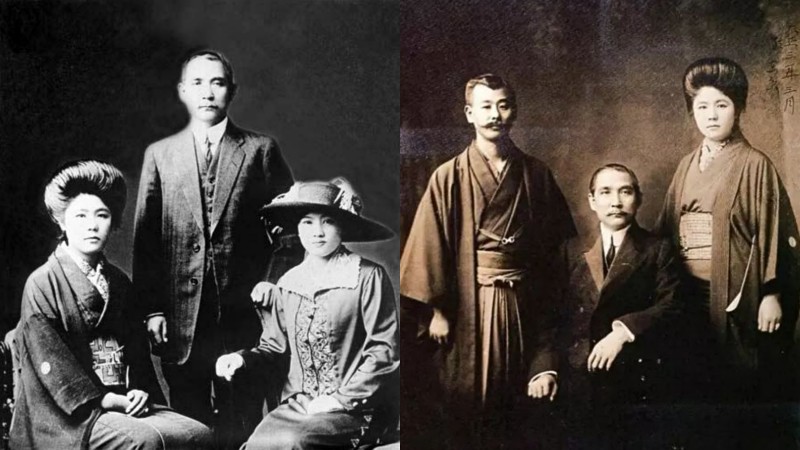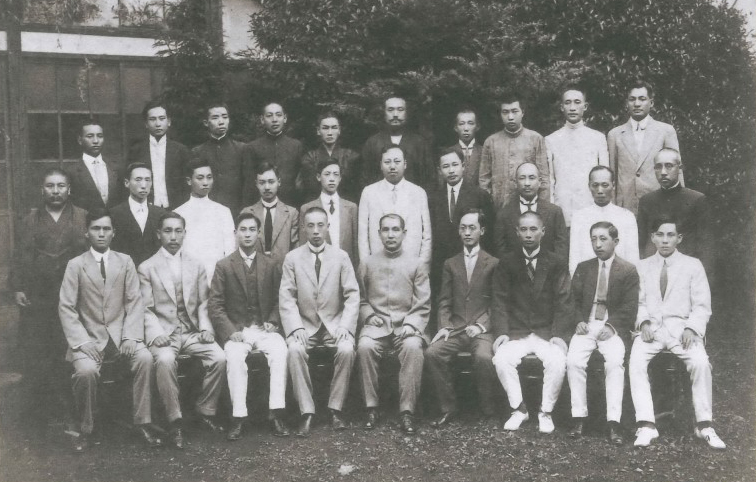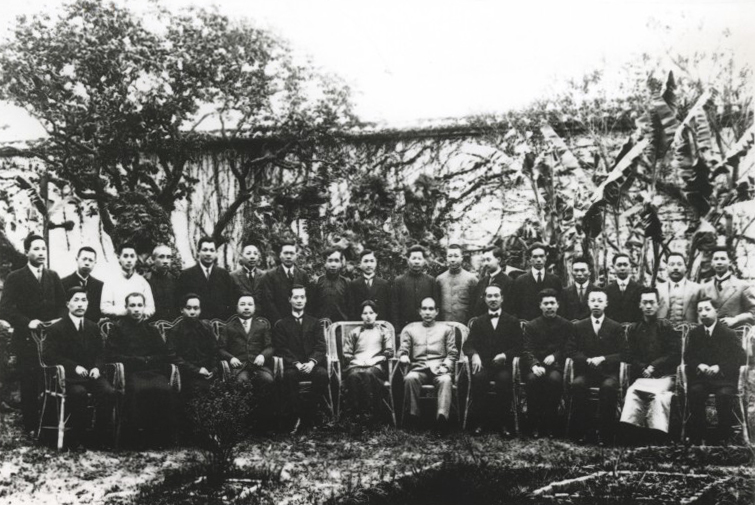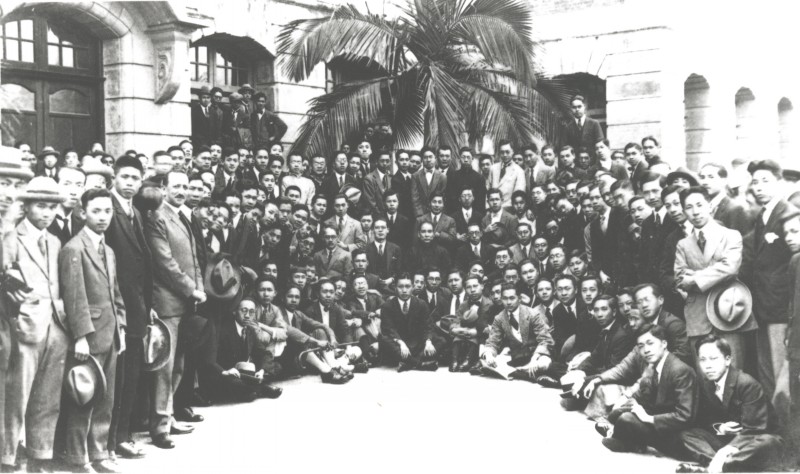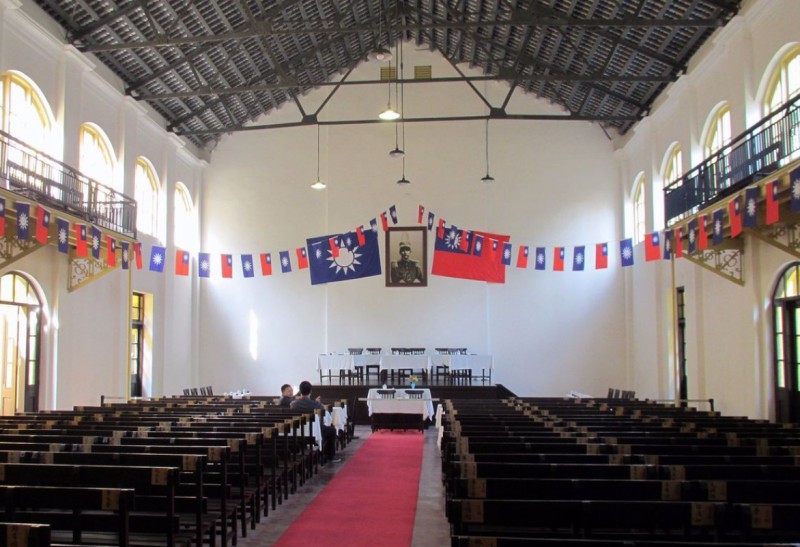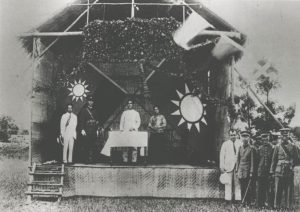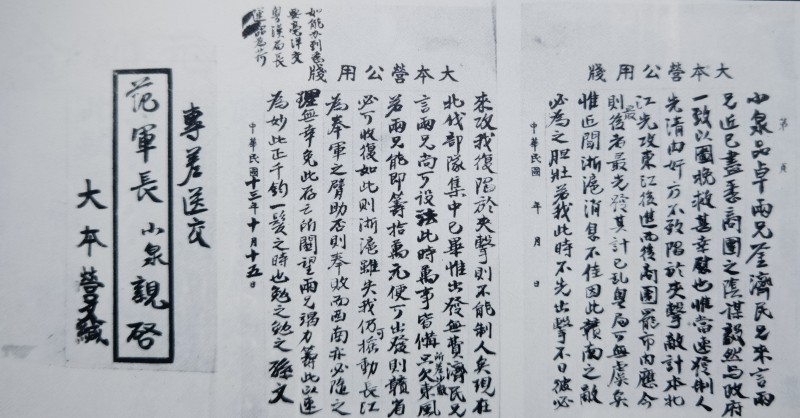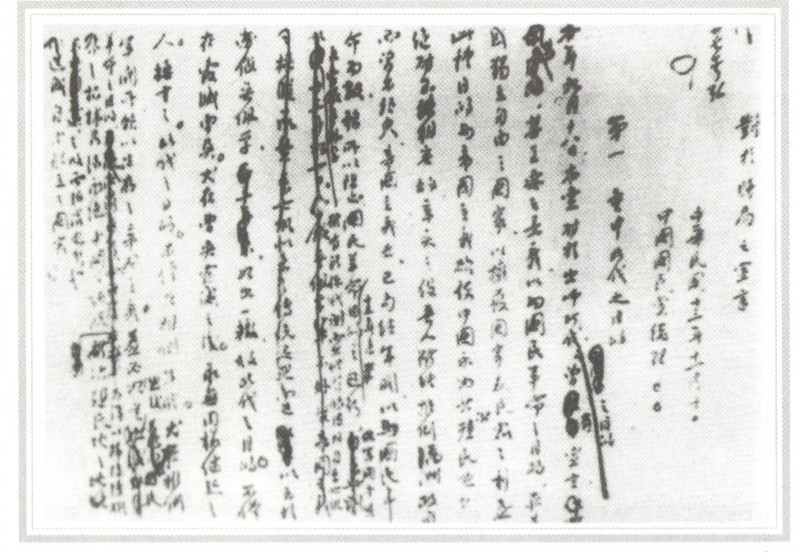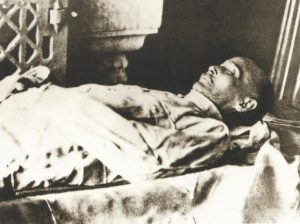Part 2: Dr Sun Yat-sen, Madam Soong Ching-ling and Hong Kong
“I always come and go between Guangzhou and Hong Kong.” (Dr Sun Yat-sen’s “You Zhi Jing Cheng”)
“I finally met Yat Sen on the warship, I really felt like a reunion after death. I also disguised myself to take the ship from Hong Kong to Shanghai. (Madam Soong Ching-ling: “Guangzhou Escape”)
| (1) | “A letter to Li Xiao-sheng” |
| (2) | “The Relationship of My family and Dr Sun Yat-sen” |
“Dr Sun Yat-sen always gave speeches to Chinese students in the United States to promote the need for revolution and changes. My father met Dr Sun at that time. They became friends and travelled together. Since then, my father set up a printing office at the basement of his home to print religious books and secret leaflets promoting revolutions”. “After finishing the University education in the United States, I had planned to study for one or two more years. However, my father called me urgently to ask me to meet him in Japan. I lived with my parents in Yokohama after arriving Japan and worked at 26 Reinanzaka, Akasaka, in Tokyo every day. My father always accompanied me to go there. He was assisting Dr Sun Yat-sen to raise fund for the revolutionary movement”. Madam Soong Ching-ling’s “The Relationship of My family and Dr Sun Yat-sen” (May 1981).
| (3) | Letter by Charles Jones Soong (Song Yao-yu) to Dr Sun Yat-sen |
Dr Sun Yat-sen had once met with Charles Soong during his stay in Shanghai to learn more about the reactions of missionaries in China towards the Wuchang Uprising and the founding of the Republic of China. Charles Soong wrote a letter to Dr Sun Yat-sen on 12 January, 1912 and stated “Missionaries in China supported our establishment of the Republic of China”, “I have already spoken to many missionaries since our last meeting. According to my understanding, the foreign force will not interfere with our actions unless foreign citizens or properties are jeopardised.”
| (4) | Charles Jones Soong (Song Yao-yu), Father of Madam Soong Ching-ling |
Charles Jones Soong (Song Yao-yu, also styled as Song Jia Shu) (1861-1918), father of Madam Soong Ching-ling, was born in Wenchang, Hainan and studied in the United States. He met Dr Sun Yat-sen in 1892 and became one of the earliest revolutionaries who joined Dr Sun’s movement. He offered his full financial support to Dr Sun’s revolutionary movements.
| (10) | “The Greatest Event of the 20th Century” |
Madam Soong Ching-ling published an article titled “The Greatest Event of the 20th Century” at the college journal of the Wesleyan College in April 1912. “Many famous educators and politicians opined that the Chinese Revolution was one of the greatest events in the 20th Century after The Battle of Waterloo. The brilliant achievements have liberated numerous Chinese people from the hardship under the absolute imperial system….”
| (11) | National Flag of the Republic of China (Five-colored Flag) and Dragon Flag |
| (14) | File of the Ministry of Foreign Affairs of Japan |
Madam Soong Ching-ling arrived in Yokohama, Japan, on 29 August, 1913. The file titled “Activities of Sun Wen” of the Ministry of Foreign Affairs of Japan recorded the meeting of Madam Soong and Dr Sun Yat-sen. Since Soong Ai-ling had to return to the country for marriage in 1914, Madam Soong took up the post as the English Secretary of Dr Sun.
| (16) | Shokichi Umeya, Dr Sun Yat-sen and Soon Ching Ling |
Shokichi Umeya received Dr Sun Yat-sen at his studio at 28 Queen’s Road, Central, Hong Kong, in January 1895. He was very supportive to Dr Sun’s revolutionary movement since then. This photo of the Umeya couple, Dr Sun Yat-sen and Madam Soong Ching-ling was taken in Japan in 1916.
| (20) | Post marriage feelings of Dr Sun Yat-sen |
Dr Sun Yat-sen said, “My wife is a women graduating from a University in the United States. She is a daughter of my comrade and friend in the earliest stage. I have started a new life. This is the real family life that I have never enjoyed before. I am so blessed to be with my soul mate and assistant.”
| (21) | Post marriage feelings of Madam Soong Ching-ling |
| (22) | A photo of Dr Sun Yat-sen, Hu Han-min and Chen Qi-mei at Tokyo |
For sake of rebuilding the republic, Dr Sun Yat-sen started the secret recruitment of members in Tokyo in September 1913. The inauguration ceremony for the establishment of the Chinese Revolutionary Party was hosted by Dr Sun Yat-sen as the President on 8 July 1914 in Tokyo. The party aimed at executing the principles of “democracy and people’s livelihood”. It also targeted at removing dictatorship and establishing a complete democratic country. The picture shows a group photo taken by Dr Sun Yat-sen and the members of the Chinese Revolutionary Party, Chen Qi-mei (4th from the left, front roll), Hu Han-min (6th from the left, front roll), Liao Zhong-kai (2nd from the right, front roll), in Tokyo, Japan, in 1915.
| (23) | Statement by Dr Sun Yat-sen |
Dr Sun Yat-sen was accompanied by Madam Soong Ching-ling to watch the tide at the Yanguan Scenic Spot, Haining, Zhejiang, on 15 September, 1916. Dr Sun felt so emotional in face of the strong tidal bore of the Qiantang River. He sighed and said“The tide of history is mighty. Those who follow it will prosper, while those who go against it will perish.”The picture shows the handwriting of Dr Sun Yat-sen.
| (24) | Photo of Dr Sun Yat-sen as the Grand Marshal of the Army and Navy |
Some parliamentary members echoed the calling of Dr Sun Yat-sen to meet in Guangzhou to launch a movement against Duan Qi-rui’s dictatorship and to protect the provisional Constitution. An extraordinary session of the Parliament was arranged in late August 1917 to set up the Military Government of the Republic of China. Dr Sun Yat-sen was elected to be the Grand Marshal of the Army and Navy. This was the first political regime established by Dr Sun in Guangzhou.
| (26) | Memorial Service for Vladimir Lenin |
The victory of the Russian October Revolution led by Vladimir Lenin brought hope and confidence to Dr Sun Yat-sen. Dr Sun sent a congratulations telegram to Vladimir Lenin and the government of the Soviet Union to show his great respect to the Russian October Revolution in summer 1918. Vladimir Lenin died in 1924, when the Kuomintang held its first National Congress. A memorial service was arranged as proposed by Dr Sun Yat-sen. He wrote a eulogy praising him as “Nation’s Friend and People’s Teacher”. The picture shows the image of the memorial service for Vladimir Lenin.
| (28) | Photo of Dr Sun Yat-sen and Madam Soong Ching-ling and the couplet |
A photo commemorating the 4th Wedding Anniversary was taken by Dr Sun Yat-sen and Madam Soong Ching-ling in winter 1919. The picture on the right was the couplet given by Dr Sun to Madam Soong as a gift stating “Be close and sincere to each other, share weal and woe; love each other and live or die together”, which showed their close tie of love transcending all the difficulties and death.
| (29) | The International Development of China written by Dr Sun Yat-sen |
Dr Sun Yat-sen started writing the book “The International Development of China” in February 1917 and finally finished it in July 1920. The book was written in English and titled “The International Development of China”, which proposed six major plans including ways and principles of industrial development in China, the construction of three major harbours and five major railway systems. It showed the grand ideas and practical planning of Dr Sun regarding the revitalisation of China and modernisation of industries. The picture shows the English version of “The International Development of China”.
| (30) | “Plans for National Reconstruction” |
| (31) | Hong Kong Victoria Harbour |
As stated by Dr Sun Yat-sen in “The International Development of China”, he opined that the prosperity of Guangzhou would not affect the benefits and prosperity of Hong Kong in the long run and from a comprehensive prospective. “A developed Guangzhou and a prosperous China will definitely benefit Hong Kong. The benefits will be hundred times more than keeping it as a poor and underdeveloped harbour solely owned by China.” The picture shows the image of Hong Kong Victoria Harbour.
| (32) | The arrival of Dr Sun Yat-sen and Madam Soong Ching-ling in Hong Kong |
Madam Soong Ching-ling accompanied Dr Sun Yat-sen to Hong Kong on 28 November, 1920 for the first time. They took the ferry named “China” to leave Shanghai to Guangzhou in the morning and took Guangzhou and Kowloon Through Train to Hong Kong in the afternoon. They were greeted by numerous people waiting outside the train station in Tsim Sha Tsui. The picture shows the image of the Tsim Sha Tsui Train Station at that time.
| (33) | Yongfeng Warship |
Warlord Chen Jiong-ming staged an armed rebellion in Guangzhou to attack the Presidential Mansion. Madam Soong Ching-ling told Dr Sun Yat-sen, “China can survive without me but not you.” She insisted sending Dr Sun away to escape from danger first. With the cover of the guards, she managed to break through the attack but was badly hurt physically. Dr Sun Yat-sen boarded the Yongfeng Warship (later renamed as Zhongshan Warship) to commend the suppression of the rebellion. He was forced to leave Guangzhou for Shanghai after holding on for 50 days. The picture shows the image of Yongfeng Warship.
| (34) | Madam Soong Ching-ling’s “Suffering in Guangzhou” |
This is an English article written by Madam Soong Ching-ling recounting the fight in Guangyinshan. The article described her escape from Hong Kong to Shanghai. Madam Soong was escorted by Sun Fo, Dai En-sai and the Dr Sun’s American consultant Robert S Norman to Hong Kong on 19 June, where she stayed at an old woman’s home. She disguised to be a maid to take ferry to leave Hong Kong for Shanghai on 20 June.
| (35) | The oil painting featuring the meeting of Dr Sun Yat-sen and Li Da-zhao |
Dr Sun Yat-sen met Li Da-zhao, one of the founders of the Community Party of China, at this residence in Moliai Road, Shanghai, to talk about the reform of the Kuomintang in the period of August to September, 1922. The picture shows the oil painting featuring the meeting of Dr Sun Yat-sen and Li Da-zhao (The origin is kept at The Second Historical Archives of China).
| (36) | Dr Sun Yat-sen and Students from The University of Hong Kong |
Dr Sun Yat-sen took a route via Hong Kong to go back to Guangzhou in February 1923. He delivered a public speech at the Main Building of The University of Hong Kong on 20 February, during which he suggested that the revolutionary thoughts were originated in Hong Kong. The picture shows a group photo with Dr Sun and the students and teachers of The University of Hong Kong taken after his speech.
| (38) | Rosamonde |
Dr Sun Yat-sen and Madam Soong Ching-ling attended the inauguration ceremony of the “Rosamonde”, the first aeroplane assembled by China, at Dashatou Airport, Guangzhou in July 1923. The picture shows the handwriting of Madam Soong stating, “This is the first aeroplane made in China in 1923, inauguration ceremony in July 1923 and is named as “Rosamonde” (the name of Mrs Sun Yat-sen).
| (39) | Dr Sun Yat-sen during the period of The First United Front |
After experiencing setbacks and failures, Dr Sun Yat-sen was determined to transform the Kuomintang. He invited members of the Communist Party of China to join them to strengthen the power of the Kuomintang. This picture of Dr Sun was taken during the period of the First United Front in 1924.
| (40) | A photo of Dr Sun Yat-sen after hosting the Preparatory Meeting of the First National Congress of the Kuomintang |
The First National Congress of the Kuomintang in China was held in Guangzhou on 20 January to 6 February, 1924. A statement was made after the Congress to reform the Kuomintang. This was the first cooperation between the Kuomintang and the Communist Party of China. The picture shows the photo taken after Dr Sun Yat-sen’s hosting the Preparatory Meeting of the First National Congress of the Kuomintang.
| (43) | The Declaration of the First National Congress of the Kuomintang |
Kuomintang passed “The Declaration of the First National Congress of the Kuomintang” on 23 January, 1924. The three major policies of “alliance with Soviet Russia, cooperation with the Communists and assistance to the workers’ and peasants’ movements” were confirmed. The declaration was the framework of the first cooperation between the Kuomintang and the Communist Party of China.
| (44) | Dr Sun Yat-sen and Madam Soong Ching-ling attended the Inauguration Ceremony of the Whampoa Military Academy |
Dr Sun Yat-sen established an academy for the army, Whampoa Military Academy, with the assistance from the Communist Party of China and the Soviet Union in 1924 to train the officers for the revolutionary army. Dr Sun accompanied Madam Soong Ching Ling to attend the inauguration ceremony on 16 June, 1924. Starting from the left: Liao Zhong-kai, Jiang Jie-shi, Dr Sun Yat-sen and Madam Soong Ching-ling.
| (45) | Letter written by Dr Sun Yat-sen to Fan Shi-sheng, Liao Hang-chao |
After the reorganisation of the Kuomintang, the British imperialists staged the “Canton Merchants’ Corps Uprising” with an attempt to overthrow the Guangdong Government. Dr Sun Yat-sen decided to set up a revolutionary committee to supress the uprising on 9 October, 1924. With the support of the labours, farmers and the public, the uprising was put down on 15 October. This was the letter he wrote to Fan Shi-sheng and Liao Hang-chao on that day.
| (46) | Reply letter by Dr Sun Yat-sen to Feng Yu-xiang regarding a trip to Beijing |
Feng Yu-xiang staged a coup on 23 October, 1924, to put Cao Kun, who won the election through bribery, in prison and called for peaceful means to solve the national problems. He sent a telegram to invite Dr Sun Yat-sen to come to Beijing on 25 October. Dr Sun decided to attend the meeting in order to end the chaotic situation among the warlords and to unify the country. This was the reply letter sent by Dr Sun to Feng Yu-xiang on 27 October.
| (48) | Dr Sun Yat-sen and Madam Soong Ching-ling took a ferry via Hong Kong to Beijing |
Dr Sun Yat-sen was accompanied by Madam Soong Ching-ling on 13 November, 1924 to go northward to discuss about national issues. He took the Japanese vessel in Hong Kong to travel to Shanghai on the following day. The photo of Dr Sun and Madam Soong was shot on board. Yongfeng Warship docked outside the Hong Kong harbour in the midnight on the 14th and entered the harbour at 7am. Dozens of small electric boats hanging with colourful flags welcomed them on the sea. This was the last visit of Dr Sun Yat-sen in Hong Kong.
| (49) | Dr Sun Yat-sen Historical Trail in Hong Kong |
Dr Sun Yat-sen Historical Trail is a walking trail in the Central and Western District in Hong Kong. It was set up by the Central and Western District Council in 1996 to link up all the locations with trace of Dr Sun Yat-sen’s activities in Hong Kong, which included the places where he studied, lived and met with the party members, to highlight his close tie with Hong Kong. The trail is 3.3km long with 15 tourist spots.
| Order | Name | Location | Content |
| 1 | University of Hong Kong | Bonham Road, Hong Kong Island | Founded in 1911, the University of Hong Kong (HKU) is the region’s oldest institute of higher learning. Dr Sun Yat-sen studied from 1887 to 1892 at the College of Medicine for Chinese, Hong Kong, which was incorporated into the HKU in 1912 as the Faculty of Medicine. Dr Sun visited the HKU on 20 February, 1923 and gave a public speech in the Great Hall (now as Loke Yew Hall), in which he declared that “Hong Kong and the University of Hong Kong are my intellectual birthplace”. |
| 2 | Original Site of the Diocesan Home and Orphanage | Eastern Street, Sai Ying Pun, Hong Kong Island | Dr Sun Yat-sen came to Hong Kong towards the end of 1883, where he initially attended the Diocesan Home and Orphanage (now as Diocesan Boys’ School) before transferring to The Government Central School in April 1884. |
| 3 | Original Site of the Reception Centre of Tongmenghui | Po Hing Fong, Sheung Wan, Hong Kong Island | Dr Sun Yat-sen founded Tongmenghui (Chinese Revolutionary Alliance) in Tokyo, Japan in 1905 and served as its first leader. The Hong Kong branch was established by the end of the same year, and it set up reception centres on Caine Road, Po Hing Fong, Morrison Hill Road, Lan Kwai Fong and Queen’s Road to provide safe havens for revolutionaries. |
| 4 | Original Site of the Preaching House of the American Congregational Church | 2 Bridges Street, Sheung Wan, Hong Kong Island | When Dr Sun Yat-sen arrived in Hong Kong in late 1883, he initially attended the Diocesan Home and Orphanage of the Anglican Church as a day pupil. He lived in the Preaching House of the American Congregational Church (now as China Congregational Church) at 2 Bridges Street and was baptised here later, taking the Christian name “Yat Sen”. |
| 5 | Original Site of The Government Central School | 44 Gough Street, Sheung Wan, Hong Kong Island | The Government Central School, which was also named as “Da Shu Guan”, was founded in 1862 as the first public secondary school providing a Western education in Hong Kong. It produced many bilingual members of the region’s elite who were enlightened by modern knowledge and held both Chinese and Western perspectives. Dr Sun Yat-sen enrolled in the upper classes of the school on 15 April, 1884 and graduated in 1886. |
| 6 | Original Site of Yeung Yiu Kee, the Meeting Place of the “Four Great Outlaws” | 8 Gough Street, Sheung Wan, Hong Kong Island | When Dr Sun Yat-sen was studying medicine in Hong Kong, he often met with his close friends Yau Lit, Chan Siu-pak and Yeung Hok-ling at Yeung Yiu Kee, the shop owned by Yang He-ling’s family, where they were able to talk freely about politics and the anti-Qing revolutionary cause. As their views violated the mainstream point of view at the time, they were called the “Four Great Outlaws”. |
| 7 | Site of Yang Qu Wan’s Assassination | 52 Gage Street, Sheung Wan, Hong Kong Island | Yeung Ku Wan joined the newly established Hong Kong Headquarters of Xingzhonghui (Revive China Society) as its president in 1895. The society then planned uprisings in Guangzhou and Huizhou, both of which ended in failure. ‘From 1900, Yang taught English at his residence which was on the first floor of 52 Gage Street. It was at this location that Yeung Ku Wan was murdered in January 1901 by an assassin sent by the Qing government.’ |
| 8 | Original Site of Foo Yan Man Ser | Pak Tsz Lane Park, Sheung Wan, Hong Kong Island | Foo Yan Man Ser (Chinese Patriotic Mutual Improvement Association or Furen Literary Society) was founded by Yeung Ku Wan and Tse Tsan-tai and occupied the site on the first floor of 1 Pak Tsz Lane in 1892. Its aim was to enlighten the public, but often meetings were held in private here to discuss political issues and reforms in China. Dr Sun Yat-sen maintained close contacts with its members, and Yeung and Tse later became the core members of the Hong Kong Headquarters of Xingzhonghui (Revive China Society), with Yeung serving as its president for a time. |
| 9 | Original Site of Queen’s College | Junction of Aberdeen Street and Hollywood Road, Sheung Wan, Hong Kong Island | On 26 April, 1884, the ceremony to lay the foundation stone of the new premises of The Government Central School was presided over by the Governor of Hong Kong, Sir George Ferguson Bowen. Dr Sun Yat-sen had just enrolled at the school, and it is thought likely that he attended the ceremony. The school moved to the new site in 1889, when it was renamed Victoria College; it changed its name to Queen’s College in 1894. In 1950, the Queen’s College moved to its present premises in Causeway Bay, and the original site has been revitalised to become PMQ. |
| 10 | Original Site of Alice Memorial Hospital and the College of Medicine for Chinese, Hong Kong | 77 – 81 Hollywood Road, Sheung Wan, Hong Kong Island | Dr Sun Yat-sen studied medicine at the newly established College of Medicine for Chinese, Hong Kong in 1887, which was attached to Alice Memorial Hospital. Dr Sun graduated with distinction in 1892. The college was integrated into the University of Hong Kong as its Faculty of Medicine in 1912. |
| 11 | Original Site of To Tsai Church | 75 Hollywood Road, Sheung Wan, Hong Kong Island | When Dr Sun Yat-sen was studying medicine in Hong Kong, he lived in the lodgings at the College of Medicine for Chinese, Hong Kong. Dr Sun often attended the gatherings held by To Tsai Church next door to the hospital, and it was here that he established the interpersonal network that later provided support for his revolutionary cause. Both the Alice Memorial Hospital and the To Tsai Church were founded by London Missionary Society, who wished to help the local Chinese community |
| 12 | Original Site of the Hong Kong Headquarters of Xingzhonghui (The Revive China Society) | 13 Staunton Street, Central, Hong Kong Island | Xingzhonghui was the revolutionary organisation founded by Dr Sun Yat-sen in Hawaii in end 1894 with the aim of overthrowing the Qing government. The Hong Kong Headquarters was set up in February 1895 under the guise of Kuen Hang Club, at 13 Staunton Street with Wong Wing-sheung as its first president. Members of the headquarters then proceeded to plan and organise their first revolutionary attempt, the Guangzhou uprising. |
| 13 | Original Site of Heng Yin Lau Restaurant | 2 Lyndhurst, Central, Hong Kong Island | Heng Yin Lau was one of Hong Kong’s most well-known Western-style restaurants in the late 19th century. It was a favourite meeting place for Dr Sun Yat-sen and his friends to discuss national affairs. |
| 14 | Original Site of the China Daily Office | 24 Stanley Street, Central, Hong Kong Island | In 1899, Dr Sun Yat-sen instructed Chan Siu-pak to set up a newspaper in Hong Kong to provide propaganda against the Qing government, and The China Daily Office served in January 1900. The newspaper’s office served not only to publish the revolutionary newspaper, but also as a contact point for members of Xingzhonghui and revolutionaries from different places. The Huizhou uprising in 1900 was planned and organised on the second floor of the office. |
| 15 | Original Site of Wo Kee Chan | 20 D’Aguilar Street, Central, Hong Kong Island | Setting up as a seamen’s boarding house, the Wo Kee Chan served as a base for revolutionary activities, and it was where the Guangzhou uprising of 1903 was planned and organised. Led by Tse Tsan-tai and supported financially by Li Ki-tong, a wealthy Hong Kong merchant, the uprising eventually failed. Tse then withdrew from the revolutionary campaign and founded South China Morning Post with the aim of promoting reform and revolution. |
| (52) | Madam Soong Ching-ling kept vigil at the Memorial Hall of Dr Sun Yat-sen’s funeral |
The couplet “The revolution has not yet succeeded and comrades still need to work hard!” written by Dr Sun Yat-sen was hung on the funeral hall. The picture shows the relatives keeping vigil at the hall: starting from the right, Kong Xiang-xi, Soong Tse-vung, Sun Ke, Dai En-sai; Madam Soong Ching-ling (6th from the left), Soong Ai-ling (1st from the left) and Soong Mei-ling (2nd from the left).





